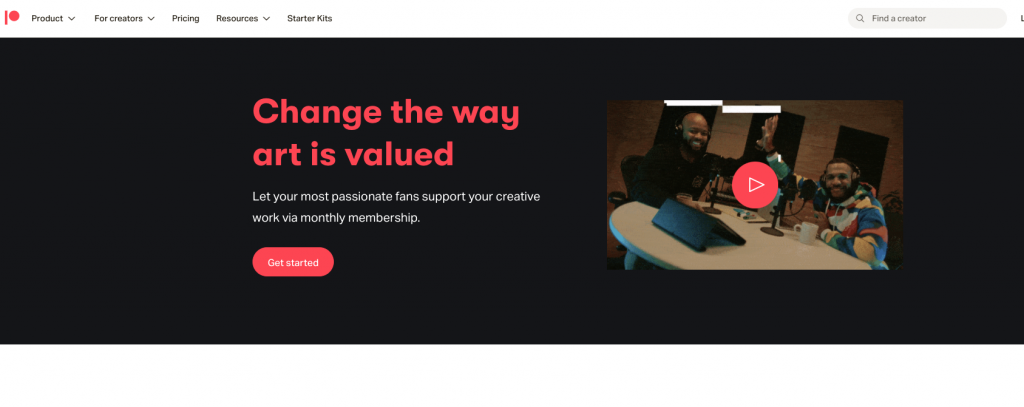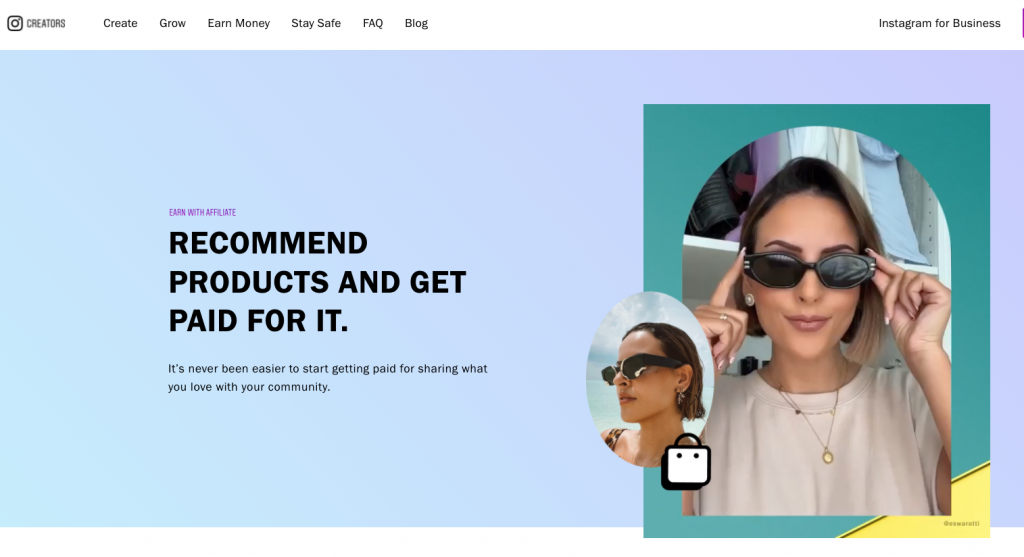As the age of social media continues to evolve and expand, there come many questions about how these platforms work and how they stay viable. Social media platforms have seen their business models scrutinized as users and governments have questioned if the amount of user information they gather is harmful to their users. There is also the concern of accountability of these sites when it comes to the content that is being published by their users.
Still, with all of these concerns, there are still new social media platforms being developed and launched every year. Some, like TikTok and Clubhouse, show that there is still room for new platforms to make their way in a seemingly crowded market. If you are an ambitious entrepreneur looking to launch your own social media platform, knowing your business model will provide a framework for building your company. Your startup will distinguish itself and ensure its longevity by matching your product and service to their needs.
First, consider the different types of social media before moving on to the various business models best suited to each platform.
Types of Social Media Platforms
Social Networks
Facebook, Twitter, and LinkedIn are examples of this category. As a social media startup owner, you’ll have to identify your target market before developing your product/service. For instance, compared to Facebook, LinkedIn is aimed at professionals who want to showcase their credentials and skill to connect with other professionals in the industry for potential business opportunities.
Media Sharing
Suppose your objective is to share through photos and videos. In that case, social networking services such as Instagram, Snapchat, and YouTube illustrate the possibilities within this space.
Additionally, Pinterest is a media-sharing social media service where you can share images and videos that appear on your pinboard based on your interests.
Discussion Forums
Perhaps you want to cater to the curious individual. A platform such as Quora is ideal for that. Quora is information and opinion-driven; it is a format where users interact on a question-and-answer basis.
Content Creation and Blogging Networks
Another option is platforms that let users create and publish content. WordPress is a content management system to share your thoughts and experiences or even build your own websites. It’s an opportunity to start a conversation on various topics such as fashion, food, travel, music, fitness, DIY, etc.
Social Shopping and Consumer Review Networks
Social media platforms such as Fancy and Etsy are commerce websites that source their collections from independent brands worldwide and provide users with a boutique shopping experience. Buyers have the option of reviewing products on the same platform.
Websites and mobile Apps like Zomato and TripAdvisor collect feedback from the public’s experience. This form of social review is for those who want to cater to consumers in niche industries.
Let’s now look at the different social media business models and the advantages and disadvantages depending on the type of social media platform your business offers.
7 Business Models Used by Social Media Companies
1. Ad-supported
This business model relies on advertising to fund a social media platform. There has been a lot of controversy around this model in the social media space, where networks tracked users and used their personal information to create targeted advertisements. However, since this has come to light, apps require user permission to share their data (to third-party apps and developers.)
Here are some mind-blowing social media advertising revenue statistics
- Ad revenue for social media platforms is expected to go over $50 billion for the first time in 2021.
- In the four-year period from 2021-2025, social media ad revenue is projected to grow at a compound annual growth rate of 7.76%, reaching $75.76B by the end of the forecast period.
- 85% of all social media ad revenue comes from mobile.
- Digital video experienced the greatest increase (20.6% year-over-year) in advertising revenue growth, generating $26.2 billion in 2020 (iab.com)
- Programmatic advertising revenues increased by $14.2 billion in 2020 (+24.9%).
2. Subscription
The subscription business model charges clients a monthly or yearly fee for access to your platform. The two biggest social media platforms currently using this model are LinkedIn premium and Whats App. Although LinkedIn is free to use, the site has optional premium features for businesses, recruiters, and job seekers for $29.99. WhatsApp currently makes money through two sources: WhatsApp for Business and WhatsApp Pay.
Although Whats App is free to download, they now offer their business solution option for a fee. As of October 22, 2020, What App parent company Meta (formally Facebook) announced that it would begin charging businesses for using its platform. As reported by CNBC, the social media parent company has yet to share with users exactly what aspects of the platform they’ll charge for, how much it will cost, and how it will impact existing fees associated with the solution.
The subscription business model attracts and retains users who won’t mind paying because, in most cases, they won’t be subject to advertisements when using your platform. It’s also less pressure on platforms to not sell advertising space to generate income.
Twitter is an example of a social media network aiming to reduce its dependency on advertisements.
One disadvantage of the subscription model for social media sites is that profit margins are typically low. Site’s such as Patreon and Substack have also created a platform where communities can be built and nurtured under an ad-free subscription model.
3. Freemium
Businesses based on this type of model offer the basic version of their product for free to showcase its capabilities to persuade customers to buy more advanced options. This model is effective for attracting a large user base. That’s because the free access lowers the entry barrier.
Users can create accounts, connect with others, and share content without any charge. However, these platforms may offer premium services – such as ad-free browsing, enhanced analytics, or additional customization options – for a fee. For example, LinkedIn offers premium members the opportunity to contact people outside their network and insights into hiring trends.
Additionally, social media sites often generate substantial revenue through targeted advertising, leveraging the vast amount of user data they collect to attract advertisers. This dual approach – free basic services combined with paid premium features and advertising – characterizes the freemium model in social media.
Benefits
The benefit of using this model is that it will attract many users because your basic service is free.
Drawbacks
The downside is that users may not see the need to upgrade at the fee you’re charging.
4. Affiliate Marketing
Example: Instagram
An example of this type of social media business model is Instagram. Brands use influential people to post about their products or services and supply a link for potential customers to follow. It has not been confirmed but is assumed that Instagram, like many other affiliate program providers, make a small commission from each sale made through their network.
This option is a solid alternative to advertising which is generally more costly for the platforms. A possible drawback to this model is that the savvy consumer may perceive the (paid for) post as a ruse, resulting in very few leads because users doubt the authenticity of the benefits.
5. Social Media E-Commerce
Poshmark is an example of this business model. The platform sells a wide range of craft supplies, handmade and vintage items. Similar to Etsy, this reseller platform has taken this a step future by adding in a social component to their app.
This social media platform offers sellers and buyers the option to “follow” certain sellers. The benefit of following to buyers is that they are kept updated on when the seller posts and shares items. Sellers can also “share” their merchandise with followers which should increase to the odds of making a sale.
6. Lock-in
This business model is where a social media network makes it difficult for customers to disengage with the platform. An example of this is Facebook which is “technologically embedded within a vast web of interconnected third-party apps,” for example, you can only gain access to some apps if you have a Facebook account.
-
- Benefits
It saves your customers the hassle of creating an account on a platform instead of linking it to yours.
-
- Drawbacks
If you make it difficult for clients to deactivate their accounts, users may feel like they’re being coerced and share their frustration. This may compromise the credibility and reputation of your platform.
7. User-generated
The basis of this social media business model is that users create content, as is the case with Tumblr and Quora. These platforms cater to the interests and needs of literally anyone where there is no limit to the information available through these types of platforms.
Conclusion
Based on the above options, you will have to decide which is most appropriate for your business and the intended consumer. This knowledge clarifies vision, encourages sales, and ensures return business. In this article, we’ve seen the various social media platforms and how your business can put a strategy into action by adopting the best fitting business model to increase your customer base and maximize revenue.













Pingback: Understanding the Media Company Business Model - StartUp Mindset
Pingback: 7 نوع مدل کسب و کار مورد استفاده شرکت های رسانه های اجتماعی - مجله خبری سوشیال لایک - سوشیال لایک
Pingback: 6 Changes Elon Musk Plans to Make to Twitter - DrDons ICFO 'Profit Business Marketing' News Media
Pingback: 6 Changes Elon Musk Plans to Make to Twitter - StartUp Mindset
Pingback: Fascinating Methods & Tactics That Can Help Your Internet Venture Grow ·